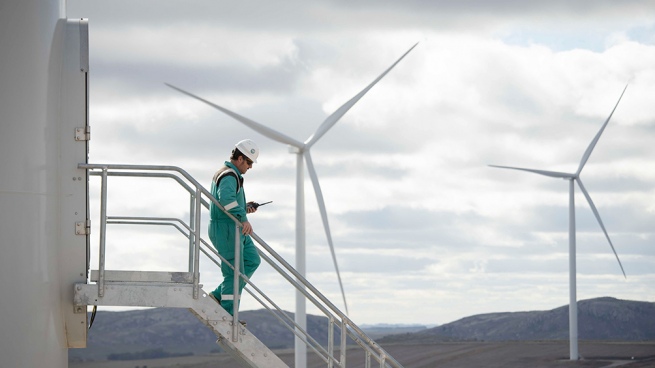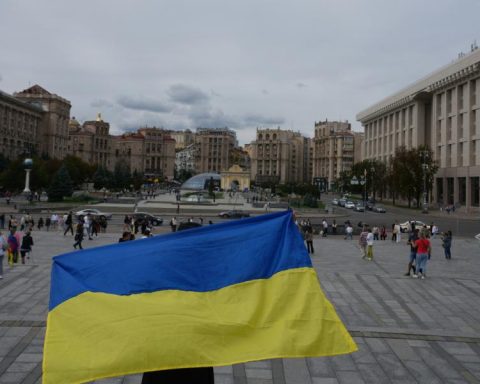The energy transition in the country began its own path to take advantage of the opportunity to become a vector of industrialization and the incorporation of national scientific and technological capabilities and avoid the “turnkey” solutions proposed by developed countries, highlighted the Secretary of Planning and Policies in Science, Technology and Innovation, Diego Hurtado.
In an interview with Télam, Hurtado – doctor in Physics and specialist in innovation and technology management – defined Argentina as an “environmental creditor” with respect to the great powers in the energy field.
The specialist identified the energy sources that can leverage the national project and outlined the way in which the inconveniences that exist to access the necessary financing to be able to build a path according to the strengths and possibilities of the country can be faced.
The following are the main sections of the talk held at the headquarters of the Ministry of Science and Technology:

-Télam: How does this energy transition find Argentina in terms of its technological and scientific capabilities?
-Diego Hurtado: The problem must be contextualized in what some authors call the triple crisis of capitalism, financial, climatic and health, and from which the large corporations, the global governance organizations, understand that the energy transition can restore the lost dynamism that it needs global capitalism. It would be a solution because it means making the entire world energy matrix transitional towards renewable energies, and in which nuclear energy is once again on the scene of transformation possibilities.
Developing countries are told that they have to accompany the energy transition because this means trying to avoid climate catastrophe and the global proposal is ‘we give you credit and you buy turnkey technologies’. And this was seen very clearly in the government of Mauricio Macri and in what was the Renovar program. But since December 2019 the paradigm is different, because the energy transition must also be an opportunity for our country and be a vector of industrialization and incorporation of local scientific and technological capabilities.
-T: Does this imply talking about a transition with its own characteristics and speeds according to the interests and possibilities of the country?
-DH: There we have to understand what we have, where we can be competitive and where we will not be able to compete. The National Plan for Science and Technology Innovation 2030 has a chapter dedicated to the energy transition, which is to understand where science and technology can support the national industry, and here comes what we call a national path, a path of its own towards the energy transition that be a tripod: energy transition, industrialization and development of autonomous scientific-technological capacities as a process of collective institutional learning. A country learns to do not with single and isolated companies or public institutions, but with networks of companies. The problem was that the Macri government dismantled those networks and today it is necessary to recover them and re-articulate them. There appears the transition path that we are elaborating.

-T: What are the energy sources that can best leverage this industrialization with scientific and technological learning?
-DH: We are seeing that the opportunities have a lot to do with the fact that Argentina is a gas producing country, we need gas as a transition, it emits much less greenhouse gases and it is a way to start a transition towards decarbonization. But the country cannot stop using gas, among other things, first because we are a developing country that is an environmental creditor and not an environmental debtor, and that is a fundamental trait because it cannot commit itself to avoiding climate change in the same way that it has to compromise Great Britain, Germany, France or the United States, which are countries that in some sense have an enormously greater responsibility than ours.
The other two components are hydroelectricity and nuclear energy as the first line of the transition, there accompanying the incorporation of renewable energies. We think that Argentina has enormous capacities that today we are trying to strengthen in wind energy, in solar thermal energy -because in photovoltaic panels it will be very difficult for us to compete- and wave energy, matters in which there is a conglomerate of national companies linked to production. And the last big sector has to do with a powerful food industry and resources for biomass and biofuels. These would be the most necessary components of what we understand that this national trail has to be.
-T: How do you solve this circle in which there are great opportunities for development but little financing capacity?
-DH: The financing capacity of a country is a necessary component to be able to talk about industrial policy and scientific and technological policy. What we understand as the path to transition is a gradual process of increasing incorporation of national capacities. When one today sees the proposal for the productive development of green hydrogen based on the investment of an Australian company, we understand that the investment must generate multiplier effects for the incorporation of national companies. In other words, if we are going to keep only the Australian investment, we end up selling wind. If we know how to negotiate, we will have the possibility of gradually incorporating technology for the production of wind energy or national green energy. This is how we understand it, as a process of incremental gradual incorporation of technology and local industry to the extent that learning processes are generated, and we can see the same thing with the investment in the fourth nuclear power plant, gas, biofuels and other sectors.

-T: Does this national strategy favor a global transition that seems to extend its original deadlines?
-DH: There is in some sense a disappointment with the rate of incorporation of renewables and with the capacity they have today to replace hydrocarbons. That is where we begin to look to the sides and revalue the nuclear sector, where some European countries claim gas as a transitional energy source. We continue to think of 2060 with green hydrogen, wind power, solar power, but today we have to get there by lowering emissions, decarbonising, and there it seems to me that we are becoming less purist, trying to go down a slightly more pragmatic path that allows a certain flexibility than At first it was thought that it was not going to be necessary.


















